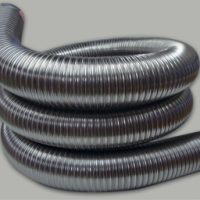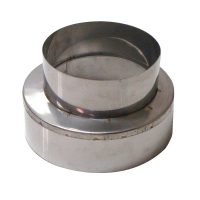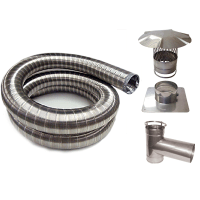By: John Haynes
Maintenance Tip #1 Preparing the water heater
Turn off the power if its an electric water heater.
Turn off the water to the water heater by closing the valve on the cold water line. Its located on top of the water heater. The cold line is always to the right.
Open a hot water tap inside the house. Air pressure will come out of the tap.
Open the drain valve located at the bottom of the water heater. It looks like a
hose bibb. Let a gallon or more out of the water heater.
Do not allow anyone to use hot water for the time you are working on the water heater.
Maintenance Tip #2 Why do maintenance?
The information in this article isn’t public knowledge. It should be. It is also very difficult to find any maintenance information about water heaters anywhere.
These tips will make it more heat efficient, and far less capable of causing problems down the road. Most maintenance is quick and cheap as well.
Maintenance Tip #3 Access of the hexhead
On top of every tank-type water heater lies a hexagonal-shaped head. It is either readily seen or it is not. If it is not, then this is a chance for improving the future maintenance of the water heater.
Drill very shallow 1/4 inch holes one at a time through the sheet metal top of the water heater. Do not drill into the water heater or it will be unusable. Once a hole is drilled use a thin object such as a pen or screwdriver to poke inside and locate the hex head.
When located, use tin snips to peel back the tin metal at the top and remove any foam insulation near the hex head. Use tape to cover up the sharp edges of the tin metal to avoid cutting your hands. Pat the edges of tin down with a hammer as well. Now your anode rods inside your tank can be maintained more easily. That’s because they are attached to the hex head.
Maintenance Tip #4 When can a gas water heater receive maintenance?
Turn the control dial to PILOT. Look inside the combustion chamber once the flame is out with a flashlight. Do you see any water, rust, or water marks? If yes, then you’ll probably need to invest in a brand new water heater altogether. If no, then maintenance of the water heater will be an option for you. Now look on top of the gas water heater at the chimney baffle. It’s the long piece of tin metal that extends to the ceiling usually. Does it have any rust on it? If yes, then you have poor ventilation in the room with the water heater in it. Call a plumber for advice on your situation, because you don’t want a hole rusted through the tin metal. If no rust appears, maintenance can be performed.
Maintenance Tip #5 Recording the maintenance you do.
Put a large sticker on the outside of the water heater, but don’t put it on anything important. Record the date when you check or replace the anode rods. Also write down any time you flush the tank out. If any new parts are used, write the part and date down too.
Maintenance Tip #6 Anode inspection
Check your anode rods every two or three years. Every once in awhile the anode location is written on the instruction on the outside of the water heater.
You may have a combination anode rod. This means that it is attached to the hot water outlet on top of the water heater. To find out if you have one, disconnect the plumbing at the water heater and the hot water outlet, which is always on the left. Poke a clothes hanger wire straight down inside the hole. If it hits something a few inches inside, you have a combination anode. Use a pipe wrench to remove the combination anode.
You may have an anode rod underneath a plastic disc only 2 inches wide or less. Pop the disc and then use a 1-1/16 inch socket wrench, a 3/4 drive, and a breaker bar. Any person may have to steady the tank when you unscrew the anode rod.
Check out http://www.waterheater-info.com or contact [email protected] for contact information on solar water heaters (they’re the ultimate in energy efficiency), tankless water heaters (they save you money on your energy bill), traditional tank-type water heaters (they’re the cheapest and easiest to install), water heater repair and maintenance, brand information, warranty information and which installer to hire.






